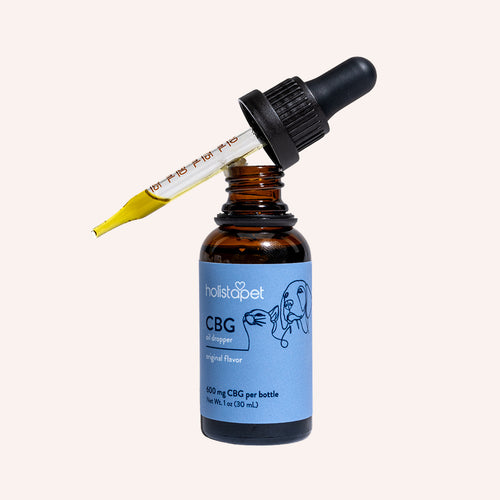If you're here to read about home remedies for ticks on dogs, we have you covered! No one likes to see their dog suffering or irritated, so we're here to help you figure out how to get your pooch tick-free ASAP. Ticks hate various things like essential oil alone, lemon, and chamomile, which can be very effective remedies for their removal.
To treat this annoying (but very common) issue, it's best to understand ticks, where they come from, and how to spot them on your dog! Let's also take a look at how you can prevent your dog from getting ticks!
What Are Ticks?
The majority of people think of ticks as insects. However, they are actually arachnids, like spiders and scorpions. What's the difference? Insects have six legs and a pair of antennae, while arachnids are eight-legged parasites without antennae. Ticks are parasitic arachnids that feed off your dog's blood. There are two types of ticks: the hard tick and the soft - tick larvae.
The hard tick, more commonly known as the common dog tick, has a hard shell on its back. Soft ticks do not have a shell on their back and are less common to find. Soft ticks mostly feed on birds and bats. Ticks often wait on the top of grass and shrubbery for potential hosts to walk by. As soon as a host walks by, they quickly latch onto their host and begin feeding.

If your dog does not show immediate symptoms, ticks can go largely unnoticed. It can take up to several days for a tick to finish feeding on its host. Once a tick attaches itself to a host, it can swell up to the size of a pea. Fortunately, there are dog and tick treatments and treatment home remedies to help clear out tick infestations.
Different Types of Ticks
There are many kinds of ticks, and some carry diseases. Ticks are divided into two groups, most commonly referred to as hard ticks (Ixodidae) and soft ticks (Argasidae). There are about 700 species of hard ticks and about 200 species of soft ticks. Hard ticks all have solid outer shells, or black plates called scutum.
Soft ticks lack a scutum and have soft, round bodies. Both tick species can wreak havoc on your dog. They can even transmit diseases to you and your canine friend! How long it takes to transmit a disease depends on how long a tick is attached to a host. Some can infect a host immediately, while others take around 48 hours. Here are some of the most common ticks you may come across:
American Dog Tick
The American Dog Tick (Dermacentor Variabilis) is one of the most common ticks in America. They are known to feed off both dogs and humans. You can typically find American Dog Ticks around the Rocky Mountain area and Pacific Coast.
Brown Dog Tick
Brown Dog Ticks (Rhipicephalus sanguineus) are even more common than the American Dog Tick and can be found worldwide. They are incredibly resilient and can even live inside homes without a host. Brown Dog Ticks are typically a reddish-brown color and narrow.
Lone Star Tick
Lone Star Ticks (Amblyomma Americanum) are more widely found throughout the eastern coast of the United States. These ticks are extremely aggressive biters. You can tell the difference between them and Brown Ticks based on the white dot or "lone star" on the back of their shell.
Are Ticks Dangerous?
Ticks are usually not life-threatening. Still, this does not mean you should ignore them. Both tick types can still wreak havoc on your dog (or even you!). Ticks can sometimes cause allergic reactions, leading to other health risks and complications. They can even transmit diseases to you and your canine friend!

Here is a list of potential diseases that these parasites can transmit to your dog:
- Lyme Disease
- Canine Ehrlichiosis
- Canine Anaplasmosis
- Rocky Mountain Spotted Fever
If a tick bites your dog, the best thing you can do is take them to a trusted vet for further advice.
Causes of Ticks on Dogs
Ticks will pop up when a dog (or person) comes into contact with even one tick. Ticks live in brushy and wooded areas, so if your dog spends a lot of time outside, they are at risk. These pests prefer warm weather, making them more active in the spring and summer. As soon as they latch onto your dog's food, the ticks are on a mission.
They attach themselves to your dog by burying their heads into their skin. Ticks will latch on to any area of skin - no part of your dog is safe. The most commonly affected areas are your dog's neck, head, ear, and paws. Since ticks are small, it can be hard to spot them at first.
So, if your dog has been playing in areas where ticks are more likely to live, make sure to check their fur thoroughly and regularly. The best way to check for ticks on your dog's fur is by carefully brushing or feeling their hair. If you want to know a few drops about what to expect after dog teeth cleaning click on it.
Symptoms of Dog Ticks
Ticks are tricky parasites that can cause several issues for your dog. The tick symptoms can vary, depending on the type of tick that bites your dog and how long it's been attached to them. If left untreated, ticks can cause these symptoms:
- Itchiness
- Anemia
- Skin allergies
- Skin irritation
- Infections

More serious symptoms can also occur if your dog contracts a disease from the tick. Symptoms of tick-borne illnesses include:
- Lameness
- Swollen joints
- Loss of appetite
- Vomiting
- Diarrhea
- Runny eyes or nose
- Fever
- Nose bleeds
- Weakness
- Swollen lymph nodes
If a tick is left undisturbed on your dog, it will attach itself and start feeding, which can also lead to a severe tick infestation too. Ticks can lay their eggs in different parts of your pet insurance home, but they often choose places near furniture, windows, baseboards, and curtains. Luckily, dog tick treatment home remedies can treat your pet and the environment.
Tick Paralysis
Tick paralysis is caused by female ticks that carry a neurotoxin in their salivary glands. These ticks release the toxin into a dog's bloodstream while feeding, causing a dog to experience paralysis. Tick paralysis can lead to death, especially if a dog's respiratory system crashes. Ticks that induce this condition include:
- Rocky Mountain Wood Tick
- American Dog Tick
- Deer Tick
- Lone Star Tick
Prevention of Dog Ticks
How to get rid of dog ticks home remedies? Dog owners can do many things to help get rid of ticks, like using tablets or topical ointments. If you don't want to get a tick prescription from your vet, there are plenty of over-the-counter products that get the job done. However, the best way to make sure your dog is tick-free is to keep them clean at all times. Don't forget to bathe and groom them regularly so you can check for not only ticks but also other injuries, infections, or dirt.
Related Post: Dog Wound Ointment [What It Is & How To Use It]
In addition, some pet owners find tick collars extremely useful. There are also a few natural methods and home remedies for dog ticks you can try for those who prefer a more natural approach. To learn more about those natural remedies, keep reading below!
Home Remedies for Dog Ticks
How to prevent ticks on dogs naturally? Dog and tick removal and treatment home remedies might be the best solution for a less severe case of ticks. A natural oils holistic tick remedy for dogs can also be great for those looking to get away from chemical-rich treatments. Broad Spectrum CBD Oil for Dogs can be another natural option to support overall wellness while addressing skin health. There are some natural solutions and several effective tick remedies that use 100% natural ingredients. A few popular home remedies for killing ticks can include:
Oil
Castor and neem oil, rose geranium oil, cinnamon, lavender, tea tree oil, and almond and coconut oil also can help remove ticks on dogs naturally. Just be sure to always dilute these essential oil before putting them on your dog's skin. It's also wise to apply a small amount to your dog first to test if they're allergic. If no adverse reactions occur, you can apply these solutions sparingly to your dog's skin to kill and repel ticks.

Lemon
Ticks and flea larvae don't like citrus, making lemon, orange, lime, and grapefruit excellent natural tick repellents. First, boil water with lemon or citrus of your choice, let it cool, then pour it into a spray bottle. You can spray it on your dog or pet's coat too, guarding them against fleas while also smelling great!
Chamomile
Chamomile is one of the most effective natural dog tick treatment home remedies, as it is a natural tick repellent. Rub your dog's skin with a cloth drenched in warm chamomile water. Concentrate on the affected area to drive away those pesky parasites and kill ticks too.
Apple Cider Vinegar
Ticks and fleas cannot tolerate the acetic acid found in apple cider vinegar. You can create a natural, tick control solution by mixing equal parts of water and apple cider vinegar. Next, soak a cloth and squeeze it on your dog as you rub the non-toxic solution into their coat. When it comes to ticks, or fleas and ticks, or any other parasites, it's always best to be vigilant. Taking proactive steps to improve and maintain your dog's health and hygiene can make all the difference in preventing ticks.
Final Thoughts
Ticks are nasty, but you can defeat these pests with the right methods! It's essential to be vigilant about looking for these little pests. If you catch them early, they don't pose a significant threat to your your dog's shampoo. So, save your pet the trouble and take care of their coat. Apply remedies as needed, and always seek the help of a vet when in doubt!


 CBD Oil for Dogs - Fast Acting
CBD Oil for Dogs - Fast Acting
 Chicken Flavored CBD Oil For Dogs - Easy Dose
Chicken Flavored CBD Oil For Dogs - Easy Dose
 Salmon Flavored CBD Oil For Dogs - Highly Rated
Salmon Flavored CBD Oil For Dogs - Highly Rated
 CBG Oil for Dogs and Cats - Loved by Thousands
CBG Oil for Dogs and Cats - Loved by Thousands




Leave a comment
All comments are moderated before being published.
This site is protected by hCaptcha and the hCaptcha Privacy Policy and Terms of Service apply.